The Town Hall Complex

Acton Baths and Swimming Pools 1904, the first buildings to be constructed by the Acton Council on part of the grounds of Berrymead Priory.
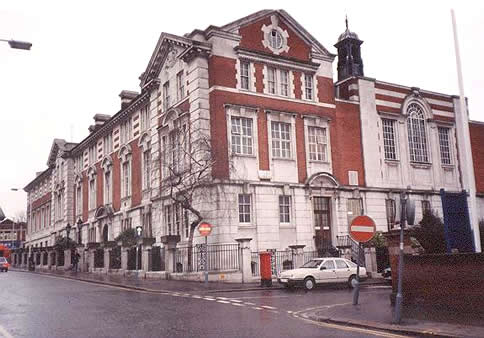
Acton "Old" Town Hall - The Minicipal Offices from 1912.
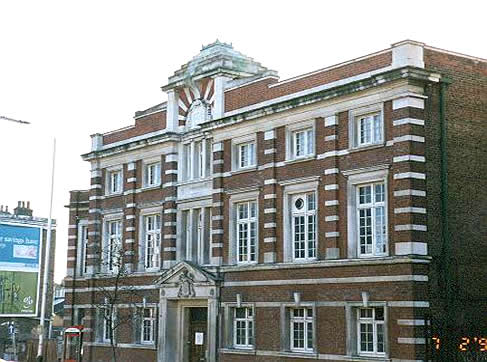
The two Swimming Baths and personal baths were built in 1904, and were supplemented in 1926 by the a building known as the King's Rooms fronting the High Street. These extra rooms formed a Grand Entrance Hall to the large baths during the winter, when it was floored over to use as a dance and concert hall. The King's Rooms contain some extremely ornate plasterwork in the former dining rooms on the first floor. Pictures of the interior of the Kings Rooms can be seen here.
The Kings Rooms effectively form the "facilities" area for the hall behind, formed from the main swimming pool that would be floored over for the winter season. The facilities included a foyer, cloakrooms and catering. The first floor room was a restaurant and has elaborate plaster coving with ship's prows that apparently refer to the "sailor" King, (King George V) possibly recalling that it was built on part of the site of the former King George V Garden that was opened on Coronation Day 1911. (The remainder of the garden is now occupied by the 1930s Town Hall.) It seems that the garden was taken over by Army offices during the 1st World War and later used as offices by the Council.
When used in this manner, the pool/hall was called the “Grand Hall” and could seat 730 on the ground floor and a further 170 in the gallery. The changing rooms were concealed by curtains. The steps down from the Kings room into the hall (large baths) can still be seen inside the swimming baths.
Plans for the redevelopment of the swimming pool can be seen here.
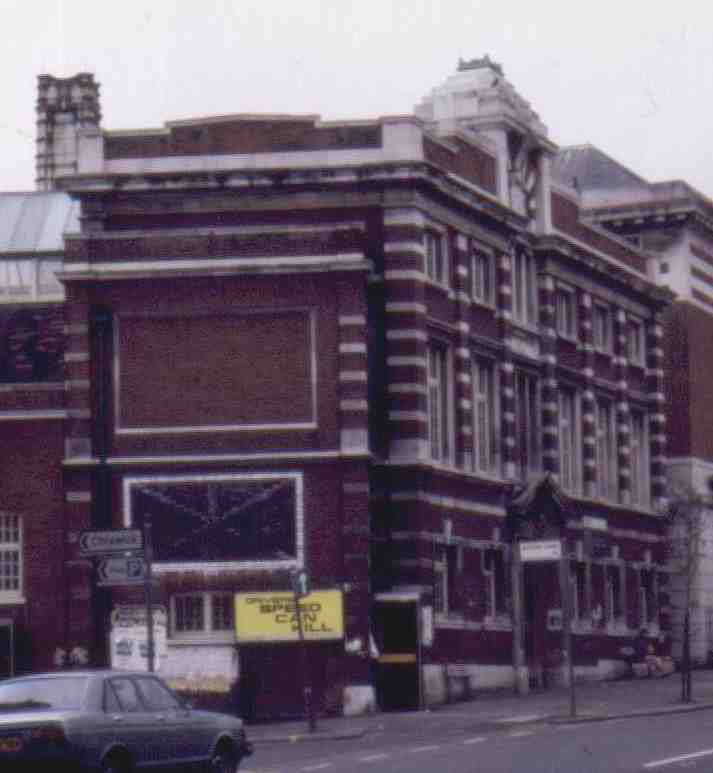
On the east wall, but not currently visible, as it is hidden by an advertising hording, there is a large black rectangle with a white cross and the letters EWS, a 2nd World War sign for an emergency water supply (the contents of the baths!).
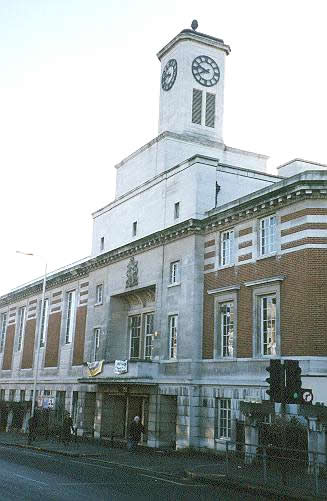
Acton "New" Town Hall 1930's.
Berrymead Priory
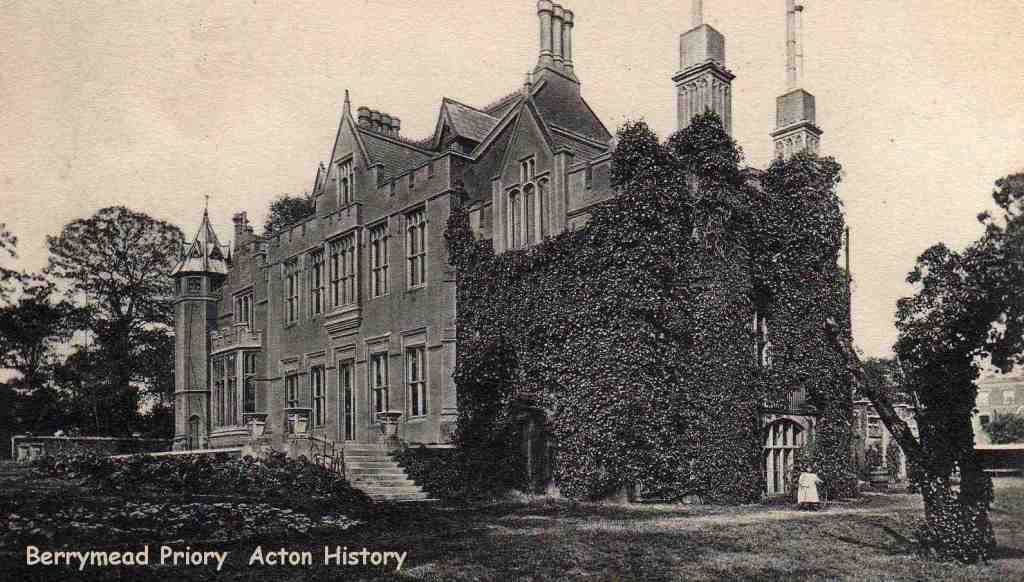
The priory was situated behind the town hall, on the site of what is now the car park. The castellated gothic building dated mainly from 1802-4, but incorporating parts of an earlier house, with further additions and alterations from about 1850. The Gardens to the south were taken for housing, and for the factory of Neville's Bakery. The house itself, with a small part of the garden, was bought by the Conservative party in 1885 and opened in 1886 as the Priory Constitutional Club. The gardens to the north were acquired by the Acton council for the Baths, and later for the municipal offices. The remains of the priory building were demolished in the 1980's.
Acton Central Station

The main building of Acton Central Station is now used as a public house.
Acton Cottage Hospital, Gunnersbury Lane
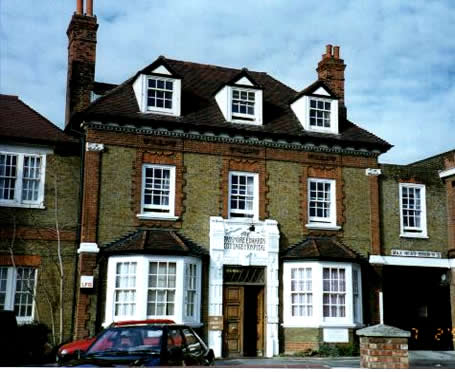
Acton Cottage Hospital was initially the gift of J Passmore Edwards

It was extended after both world wars as a War Memorial
The
Two wings were added in 1923, and opened by Neville Chamberlain, as the War Memorial for

The first building and the two extension wings.

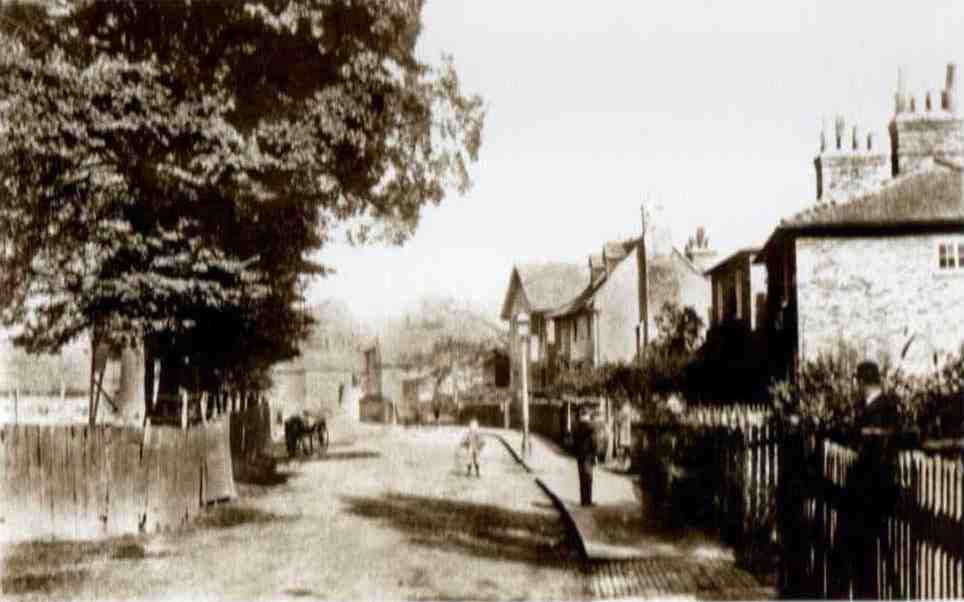
An early view of Gunnersbury Lane.
The Isolation Hospital, Leamington Park

The Isolation Hospital in North Acton was opened in 1904, and was closed and demolished some years ago.
Acton Central (Derwentwater Schools)

D
The school separated the boys and the girls as was the rule of the time. Intended as a school for "bright and promising children whose parents could afford a small fee" it was soon full. It was just what many
There have been many changes and today the building is known as